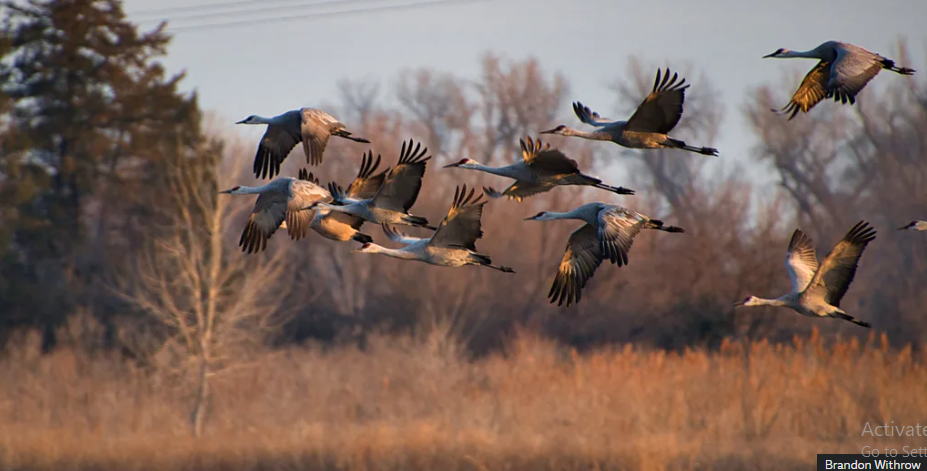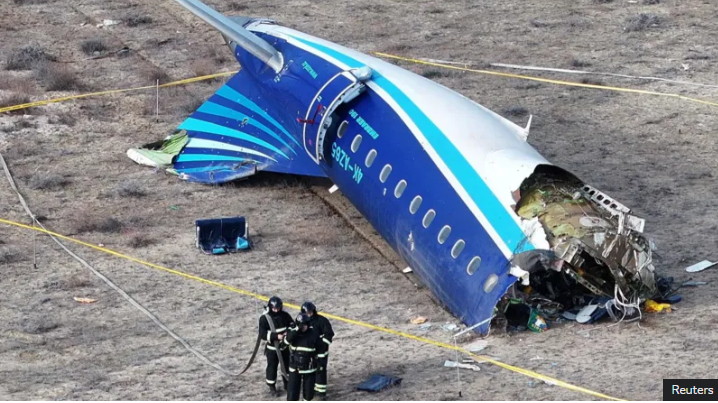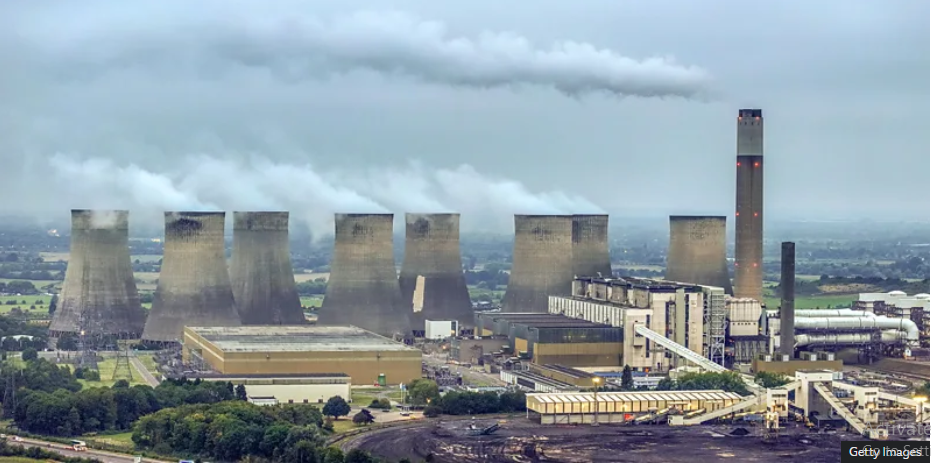The destruction a fire brings can be crucial for certain species to thrive. Meet the conservationists reviving the ancient art of “good fire”.

Every spring, more than 600,000 sandhill cranes migrate through Nebraska following the Platte River. Having arrived from as far as the southern US and Mexico, the birds linger in a location for weeks, fattening themselves during the day in the fields to prepare for their journey as far north as Siberia. They rise with the sun, pull their red-capped heads out from under their gray wings, and start their unmistakable vocalisations — a deafeningly loud bugling sound that churns repeatedly in their throats.
Then something amazing happens: they take flight in waves of the tens of thousands, leaving to feed in nearby fields before returning to the river at night.
The spectacular show is the most important tourism draw for cities in the area, with an economic impact of around $14.3m annually. Birders migrate annually by the thousands to the Iain Nicolson Audubon Center at Rowe Sanctuary in Kearney or the Crane Trust outside of Grand Island, Nebraska. But this precious stopover site has come under threat, like other grasslands around the world, from a number of factors including agriculture and invasive plant species.
To preserve it, conservationists are reviving an ancient but long-suppressed land management method: controlled burns.
Also known as “prescribed burns” or “cultural fires”, these intentionally started, controlled fires have received growing attention in recent years, as a way to clear dry undergrowth that can build up and fuel huge wildfires. One 2024 review suggests that prescribed burning can reduce the severity of wildfires between 62% and 72% relative to untreated areas. However, the idea of prescribed burns is not new. Indigenous communities long used “cultural fires” to remove old grass and support new growth. In addition, controlled fires may also help create a healthy ecosystem for cranes and other species by creating open habitats.
Cody Wagner A prescribed burn at Rowe Sanctuary (Credit: Cody Wagner)Cody Wagner
A prescribed burn at Rowe Sanctuary (Credit: Cody Wagner)
“Grasslands are one of the most endangered ecosystems globally, with research showing a 60% decrease in grassland biodiversity since the 1970s,” says Amanda Hefner, education manager at Audubon’s Rowe Sanctuary. “So the best way we can make sure that the grasslands stay grasslands, is by making sure that we’re using tools to keep it in that habitat — tools like prescribed fires.”
This allows for “nutrient cycling”, adds Hefner. Wildfires are often highly intense burns that strip the land of nutrients, while low intensity, prescribed burns can clear fuel leaving nitrogen, minerals found in ash, and partially burned, decomposing biological material, increasing nutrients in the soil soon after a burn. With the litter being cleared, there is now room for new, more nutritional growth.
Prescribed burns involve planning specific patches to set on fire. Those patches might be near firebreaks, like a road, or burn specialists might mow breaks around the burn area, which removes litter and dry grasses that could help a fire spread. They will also spray it with water to keep the fire from spreading to the break. They must take into consideration things like humidity, wind direction and where they want the fire to be pushed by that wind. If they’ve cut out a U-shape, for example, they move the fire forward until the section is completely burned. The team works together to keep it under control. Patches are usually relatively small, and timing depends on the last time they were burned, whether grazing animals are willing to eat there, which invasive species are taking over and how the area is being used by wildlife.
The fires are part of an effort to restore the cranes’ natural habitat, which conservationists say used to be shaped through an intricate interplay of natural cycles and indigenous communities’ intervention. Human impact has entirely transformed that original habitat, meaning that a full return to the original conditions is impossible, and making this form of partial restoration crucial.
Brandon Withrow Masses of sandhill cranes leaving the Platte River in the morning at Rowe Sanctuary in Kearny, Nebraska (Credit: Brandon Withrow)Brandon Withrow
Masses of sandhill cranes leaving the Platte River in the morning at Rowe Sanctuary in Kearny, Nebraska (Credit: Brandon Withrow)
A crane paradise lost
In its original shape, the once wide, but relatively shallow Platte River provided an open space for the cranes to roost, while also keeping an eye on predators. These four-to-five-foot tall birds with wingspans of six-to-seven feet found abundant plants and insects to eat on the Nebraskan prairies. Lightning strikes brought occasional wildfires, which cleared out dead material and refreshed native plant life.
“It’s estimated that, especially in the central Great Plains where Nebraska is, there was somewhere between a five and seven year fire return interval,” says Josh Wiese, range manager for the Crane Trust. “An acre would have burned every five to seven years.” These could have been wildfires caused by lightning strikes or even indigenous cultural fires, he noted.
“What fire does is clear off that vegetation,” says Wiese. “Specifically for cranes, that allows them to get their beaks down into the dirt and pick out tubers,” as well as earthworms and different invertebrates.
















